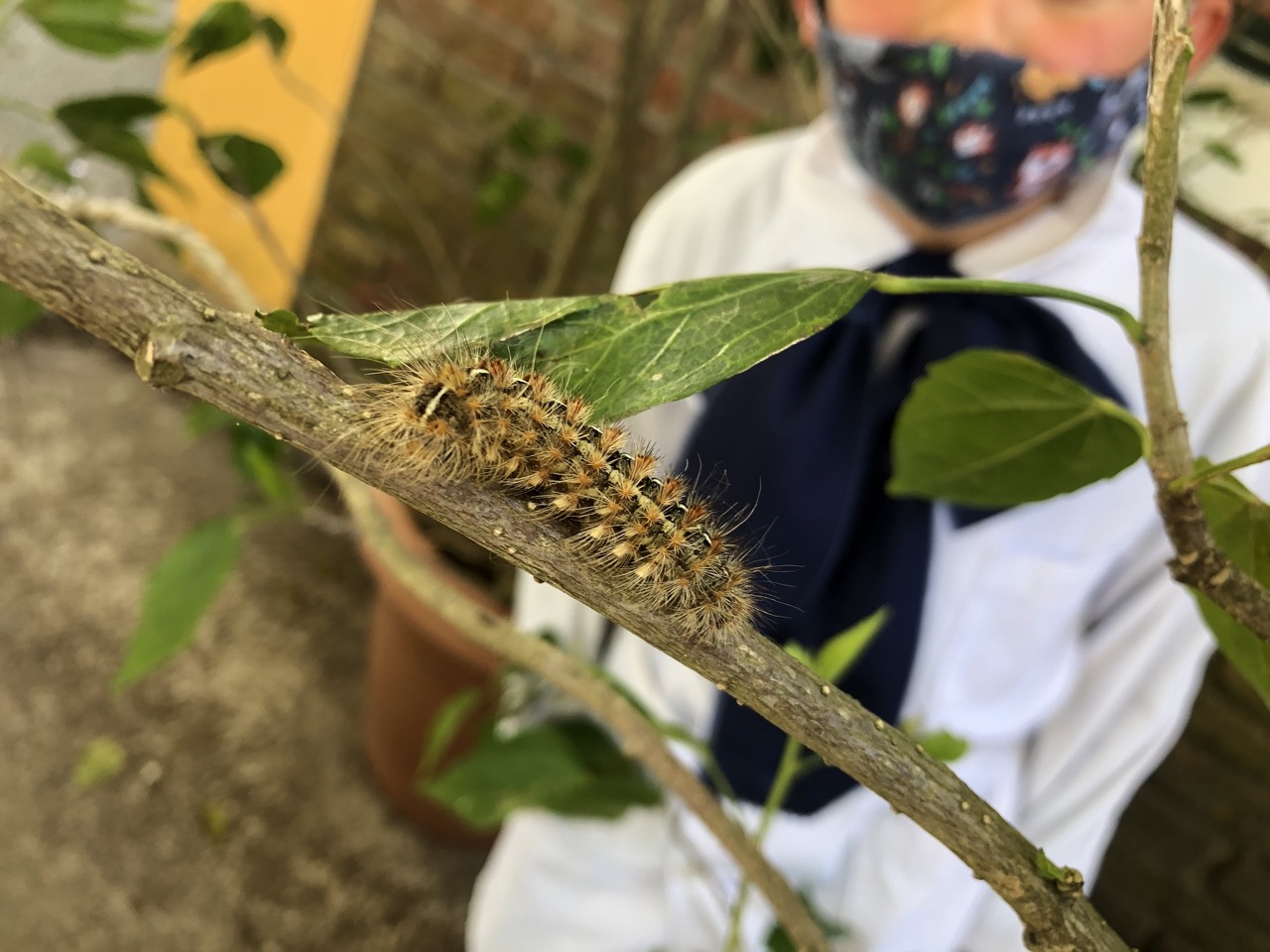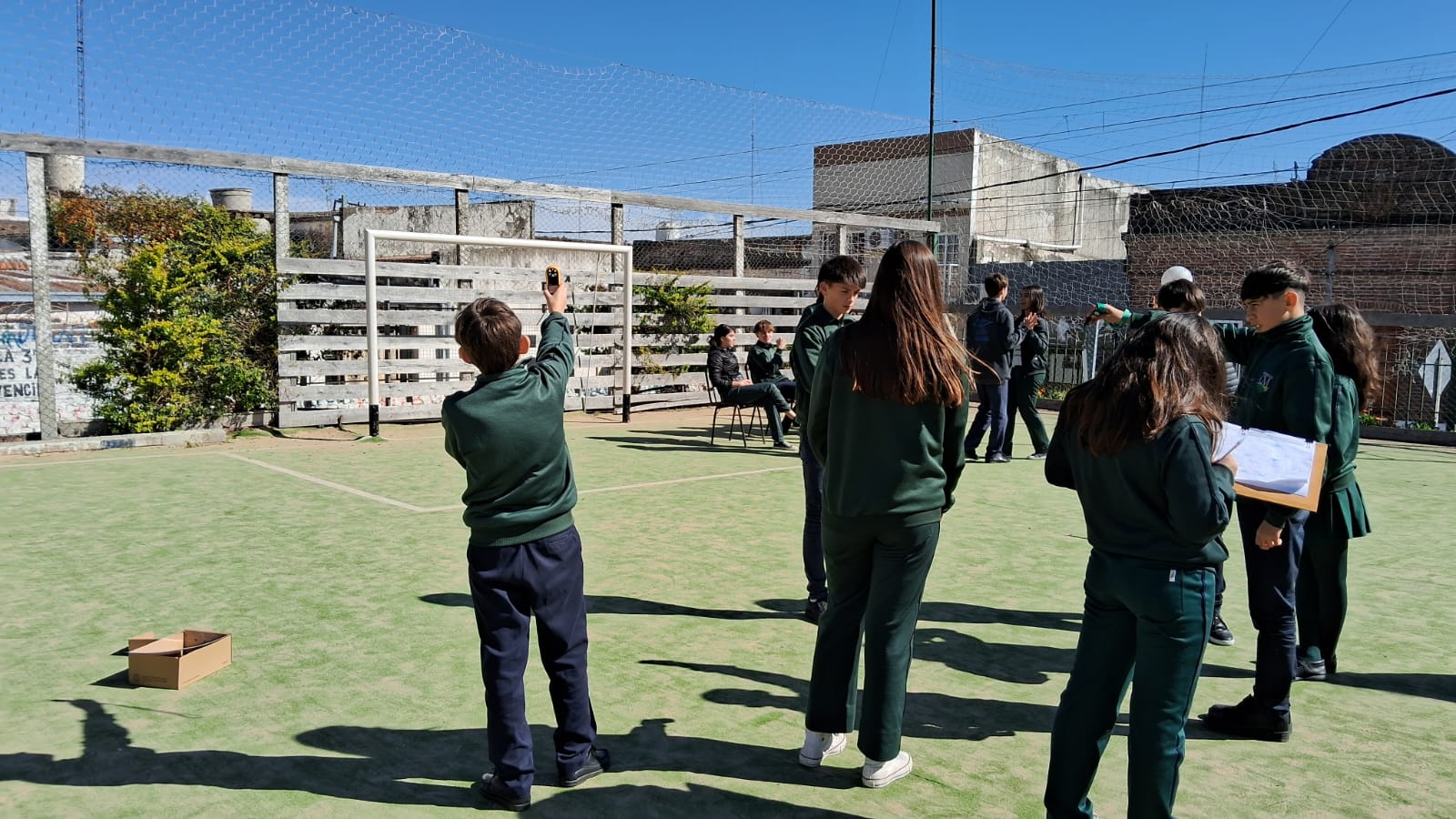Stars and STEM Stories
Connecting GLOBE Activities in Uruguay, Peru, and Argentina to Learning About Butterflies
The project "Butterflies and the Environmental Variables" started at the beginning of the COVID pandemic and has since expanded to six schools in three GLOBE countries: Uruguay, Peru, and Argentina.
When COVID-19 arrived in Uruguay in 2020, GLOBE teacher planning for the new school year came to a stop as schools closed. However, a group of four GLOBE educators and friends—Marta Kingsland, Claudia Caro, Darío Greni, and Andrea Ventoso (GLOBE Uruguay Country Coordinator)—brainstormed ideas for continuing GLOBE activities and observations for students during the shutdown.
The Butterfly Project
 The
group decided that butterflies would be an ideal focus for a project
because they are appealing to students, interesting to study,
observable in many places (fields, parks, gardens, yards), and
important as pollinators in nature. The project would also allow GLOBE
students to study their local ecosystems using the GLOBE Land Cover
protocol and a modification of the GLOBE Phenology protocols. The
group created a field guide, a data sheet, and a spreadsheet using
GLOBE criteria for recording environmental variables, time, and
location data. Darío Greni, principal of the Alfred Nobel School in
Canelones, Uruguay, describes the beginning of the project:
The
group decided that butterflies would be an ideal focus for a project
because they are appealing to students, interesting to study,
observable in many places (fields, parks, gardens, yards), and
important as pollinators in nature. The project would also allow GLOBE
students to study their local ecosystems using the GLOBE Land Cover
protocol and a modification of the GLOBE Phenology protocols. The
group created a field guide, a data sheet, and a spreadsheet using
GLOBE criteria for recording environmental variables, time, and
location data. Darío Greni, principal of the Alfred Nobel School in
Canelones, Uruguay, describes the beginning of the project:
In 2020, when the world came to a standstill, together with a group of sixth year students, we began to develop a project that, like the butterflies we observed, took us in a harmonious but challenging flight to different and unthinkable places. This collaborative work, which has been going on for more than 4 years now, has started its metamorphosis process and has emerged as research that transcends years and school cycles. A project that, in the words of the students, has made it possible for them to admire beauty.
 The
project, begun out of necessity, was very successful. Two GLOBE
students from the Alfred Nobel School shared their research at the
2023 GLOBE Annual Meeting in Denver, Colorado. The students reported
on the relationship between the presence of butterflies in their
schoolyard and environmental variables such as temperature, cloud
cover, humidity, and wind speed and direction.
The
project, begun out of necessity, was very successful. Two GLOBE
students from the Alfred Nobel School shared their research at the
2023 GLOBE Annual Meeting in Denver, Colorado. The students reported
on the relationship between the presence of butterflies in their
schoolyard and environmental variables such as temperature, cloud
cover, humidity, and wind speed and direction.
Motivated by the success of the project, Andrea Ventoso, GLOBE Uruguay Country Coordinator, and other educators submitted a proposal in February 2024 to YLACES for funding to implement a regional collaboration across six schools in Argentina, Peru, and Uruguay. The project was awarded funding in July 2024, and field work began in mid-August. The project's goals are to identify the main butterfly species in common to the three countries and the environmental variables that affect their sighting in the study locations. Participants include students aged 11–18 years and teachers at the primary school, secondary school, and university levels. Participating schools are equipped with thermometers or hygro-thermometers, infrared thermometers, rain gauges, anemometers, compasses, microscopes for electronic devices, and pH strips that will help them measure all the variables that favor the presence of butterflies in the field.

Working on projects with students is really motivating, but it is
evident that doing it with butterflies has a special appeal, as it
inspires in students the desire to learn and do. Around these
colorful insects, it is very easy to introduce students to the GLOBE
protocols, to Natural Sciences, to research, and to the care of the environment.
—Fernanda Kielmanowicz, Colegio de la Mesopotamia, Victoria,
Entre Ríos, Argentina

An Interdisciplinary Collaboration Among GLOBE Educators
This project was created by a team of GLOBE educators, but building relationships between teachers, trainers, and Country Coordinators takes time and effort. However, it is this type of networking and team building that makes projects such as this one possible. This project team includes teachers of mathematics, physics, geography, biology; a librarian; and four mentor trainers. An entomologist, Dr. Gabriela Bentancur Viglione, also supports students and teachers by teaching them about the ecology, identification, and habits of butterflies.
The strength of working together is what inspires us to maintain
this project alive, and maybe, only maybe, become a future GLOBE
protocol that can be applied in other countries!!
—Andrea Ventoso, GLOBE Uruguay Country Coordinator
The Butterfly Team
 From top left: Andrea Ventoso, librarian, mentor
trainer, and Country Coordinator from Uruguay. Marta Kingsland,
geography teacher, mentor trainer, and Country Coordinator from
Argentina. Darío Greni, teacher, principal, and trainer (teaching and
leading Primary School No. 88 Alfred Nobel) from Uruguay. María Marta
Gutiérrez, biologist and biology teacher (working in Saint Luke’s and
Santísima Trinidad Colleges) from Argentina. Claudia Romagnoli,
magister in science didactics and mentor trainer (assessing Primary
School No. 1345 Nuestra Señora del Carmen) from Argentina. Dr. Claudia
Caro, mentor trainer (teaching in Universidad Agraria La Molina)
representing Perú. María Fernanda Kielmanowicz, biology teacher and
veterinary doctor (working in Colegio de la Mesopotamia) from Argentina.
From top left: Andrea Ventoso, librarian, mentor
trainer, and Country Coordinator from Uruguay. Marta Kingsland,
geography teacher, mentor trainer, and Country Coordinator from
Argentina. Darío Greni, teacher, principal, and trainer (teaching and
leading Primary School No. 88 Alfred Nobel) from Uruguay. María Marta
Gutiérrez, biologist and biology teacher (working in Saint Luke’s and
Santísima Trinidad Colleges) from Argentina. Claudia Romagnoli,
magister in science didactics and mentor trainer (assessing Primary
School No. 1345 Nuestra Señora del Carmen) from Argentina. Dr. Claudia
Caro, mentor trainer (teaching in Universidad Agraria La Molina)
representing Perú. María Fernanda Kielmanowicz, biology teacher and
veterinary doctor (working in Colegio de la Mesopotamia) from Argentina.
Butterflies inspire us [to think about] freedom, beauty, change,
transformation. ... When we see them, we feel an enormous joy
because we observe a fragile wonder of nature that transmits an idea
of ephemeral but real beauty, which causes a feeling of wellbeing
that is difficult to explain. In this work, students will be able to
feel the pleasure of observing a being full of fragility and they
will also experience the relationship with science that will allow
them to identify different types of butterflies, study them and link
them to different environmental variables.
—Claudia Romagnoli, School No. 1345 Nuestra Señora del Carmen,
Pujato, Argentina
Thank Yous
Congratulations to the teachers and scientists for creating this project and collaborating to expand it to new schools and countries! We look forward to hearing about the students’ findings in the future.
Thanks to Andrea Ventoso, GLOBE Country Coordinator, Montevideo, Uruguay, for submitting this story.
Thanks to Dr. Gabriela Bentancur Viglione, entomologist, for teaching the students about the ecology, identification, and habits of butterflies and to Juan Farina, entomologist from Argentina, who helps with the identification of the Argentinian butterfly species.
Learn More
- Learn more about the two students from Uruguay who presented their research on the relationship between the presence of butterflies in their schoolyard and environmental variables at the 2023 GLOBE Annual Meeting in Denver, CO.
- Learn more about GLOBE Uruguay.
- Learn more about GLOBE Peru.
- Learn more about GLOBE Argentina.





